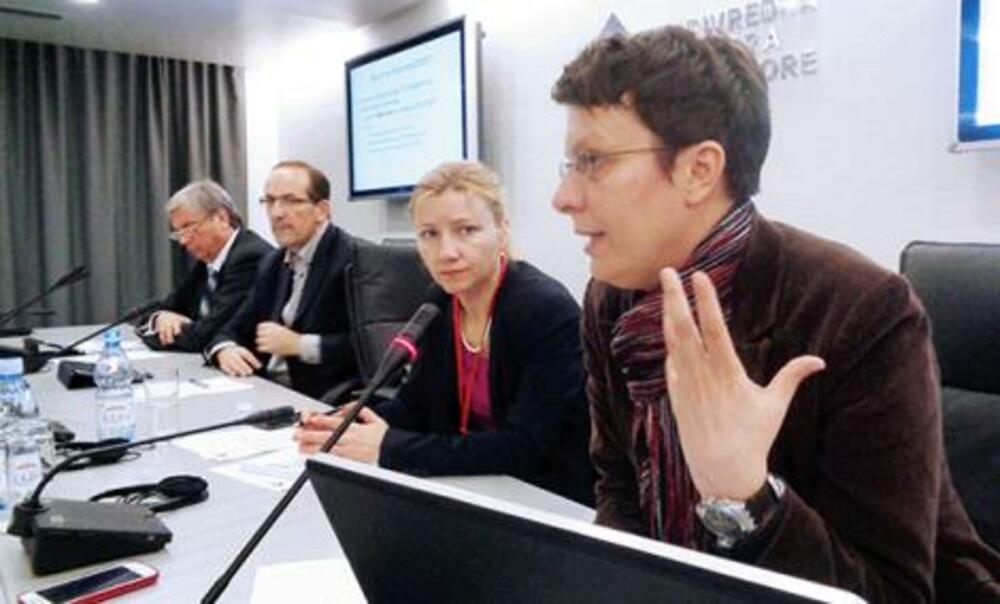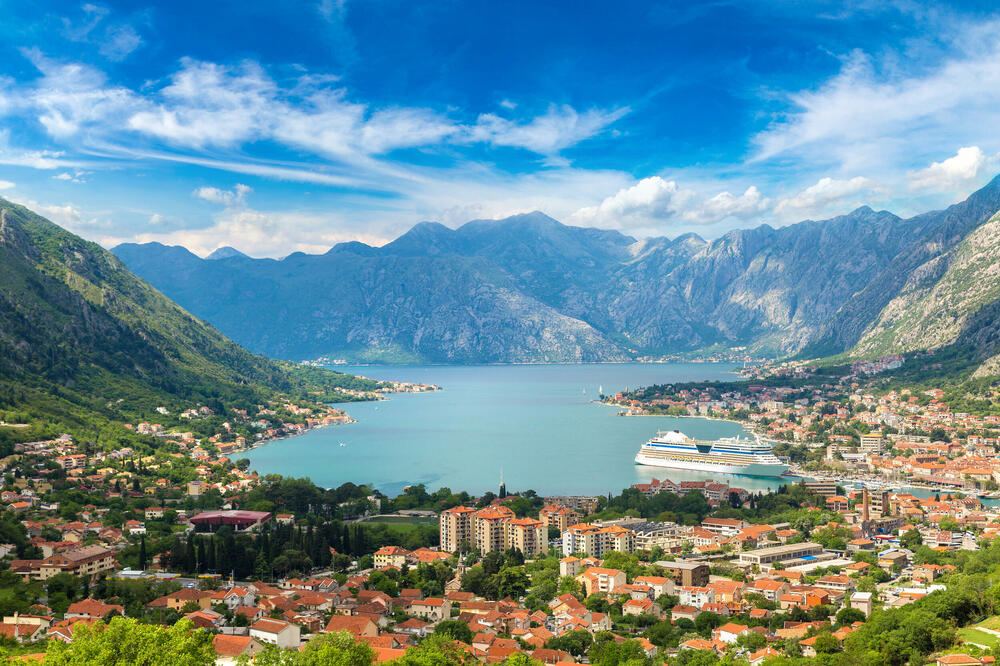The Spatial-Urban Plan (PUP) of Kotor is not fully aligned with the Cultural Property Protection Study, on the basis of which it was supposed to be done, so problems have already appeared in the application of the new plan, which has been valid in the protected area of the Bay of Kotor since the second half of last year .
It is to the Center for Investigative Journalism of Montenegro (CIN-CG) confirmed by the Administration for the Protection of Cultural Property (UZKD).
This means that these two key documents could be opposed on some plots. Thus, it could happen that according to the new Kotor plan, it is possible to build on some area, but the Studio forbids it. All of this could threaten the area of Kotor, which the United Nations Educational, Scientific and Cultural Organization (UNESCO) put on the World Heritage List in 1979.
The application of the Kotor PUP represents a great danger for the preservation of the cultural landscape of Boka, an architectural engineer points out for CIN-CG Aleksandra Kapetanović from the Center for Sustainable Spatial Development (EXPEDITIO).
Kapetanović, who participated in the drafting of the Study, explains that the implementation of that plan may not threaten individual cultural assets, but it could directly and irreversibly threaten the key values - the cultural landscape of the protected area.
She adds that the PUP allows the construction of tourist facilities in some zones between settlements, for which it is clearly stated in the Study that no construction should take place.
Regardless of the partially complied measures of the Study and the recommendations of the UNESCO mission, assesses Kapetanović, the plan still continues the already clearly visible bad practice of complete and inadequate transformation of the cultural landscape of coastal settlements, and the most drastic example is next to Kostanjica, now certainly Dobrota.
"The PUP is a bad and problematic planning document for the area of the Municipality of Kotor, which was formally approved by the competent institutions, but which is not fundamentally based on the preservation of the exceptional universal value of the Area of Kotor, i.e. of its overall cultural landscape, which represents World Heritage", concludes Kapetanović.
In September of last year, the previous Government of Montenegro adopted a new PUP of Kotor, which replaced all previous plans and was supposed to bring the situation in the protected area to order. However, this has not happened so far.
UZKD confirmed that there are a certain number of problematic plots, due to frequent inconsistencies between the Studio and the Kotor PUP.
"The Administration requested the preparation of a Heritage Impact Assessment (HIA) for all locations, the planned construction of which could not be coordinated with the Study," the Administration states.
However, as they explain, due to legal restrictions and limited funds in the budget, it turned out that even this practice does not give good results, so the Administration is now trying to find a simpler solution with UNESCO.
They say that, although this plan has largely corrected some earlier solutions that were not good, the problem also occurs in some locations, where there is no detailed planning in the PUP.
They emphasize that the opinion of the Administration is certainly necessary for the implementation of all interventions in the area, which can affect the cultural property.
They point out that better quality intersectoral cooperation is necessary, as well as cooperation between municipal and state departments, in order to improve the field of space protection.
The fact that the Ministry of Ecology, Spatial Planning and Urbanism (MEPG) claims that they are not aware of the problems in the application of the PUP and its non-compliance with the Protection Study confirms that the communication between the sectors is not always up to par.
"The PUP of Kotor has passed a great inspection, it has received all the approvals of UNESCO", say the Ministry.
They point out that in the procedure of creating that planning document, the consent of the Administration for the Protection of Cultural Properties was also obtained, in which, among other things, it was stated that the Kotor plan was corrected in accordance with all recommendations and the Study.
The issue of its application, they add, is entrusted to the municipality of Kotor.
However, the Kotor Secretariat for Urbanism claims that the PUP of Kotor has completely taken over the Study and as such has received UNESCO's consent.
Gligorić: Spatial planning practically does not exist

Now it is questionable how long this Kotor plan, as well as the other local plans that are being worked on, will last in general, because MEPG plans to change the Law on Spatial Planning and Construction of Buildings and to return greater decision-making autonomy to municipalities, but also to give the area of spatial planning and construction of buildings is most likely regulated on the basis of several laws.
Since the passing of the Law from 2017, there has been complete chaos in the field of spatial planning. For four years, the state has failed to implement that law, which was supposed to include the Spatial Plan of Montenegro (PPCG) and the General Regulation Plan (PGR), which was supposed to replace local plans, into the spatial planning system.
However, all the deadlines for the creation of the PPCG, which should direct the complete development of the country, were missed, and the PGR was abandoned this year, after its creation was also repeatedly postponed from 2017.
The PPCG is adopted for a period of 20 years, and the deadline set for the completion of the plan is March next year. However, this deadline will most likely be extended, as well as many earlier ones, because according to CIN-CG's knowledge, it can hardly be completed by that period.
In order to pass the PPCG, a new law must first be adopted.
However, the development of local plans, which are not provided for by the current law, continued, so plans for Tivat and Budva are currently being developed.
At the same time, experts from this field claim that it is completely inappropriate to work first on the lower level, that is, local plans, and not have a Spatial Plan, which is a strategic plan related to the overall development of the country.
"The spatial planning system practically does not exist," says the architectural engineer Biljana Gligorić from EXPEDITIO.
He points out that the 2017 Law on Spatial Planning and Building Construction was a big and expensive mistake. Precious time has been lost, and the situation is getting more and more complicated.
It is very dangerous, as he adds, that practically for half a decade the area of spatial planning has been in a vacuum without a clear structure, mutual hierarchy and effective procedure for issuing documents, as well as without control.
"The system on which development rests has collapsed to the core. Now we need to get together as soon as possible and make a set of new laws, modern, based on the principles of old practices in this area and in accordance with the size and capacities of our country", assessed Gligorić.
She believes that abandoning the General Regulation Plan was a good decision, because that plan caused a lot of confusion among experts:
"Spatial planning is a serious system area, in which experiments like this, suddenly introduced, especially without the consent of the profession, are very dangerous and the damage can be immeasurable".
He hopes that the new spatial plan, in the drafting of which he participates, will be adopted by the end of next year, but he points out that it must not be adopted without a public discussion, because it is a plan that is related to the overall development.
She emphasizes that the unanimous opinion of non-governmental organizations and experts is that it is necessary to separate the current law into at least four completely separate laws.
"If this were not the case, we would once again have a situation in which decisions that must be made on the basis of knowledge are made exclusively politically," she points out.
New Law and PP by the end of next year
The MEPG confirmed for CIN-CG that the preparation of the PGR was abandoned and that work is being done on the preparation of a new proposal for a law on spatial planning. They explain that it is problematic to implement a plan that would replace all local plans, as foreseen by the current Law. It turned out that the centralization of spatial planning is problematic, there was a delay in the development of plans, and local self-governments and the non-governmental sector protested.
Even the PPCG, they confirm, cannot be completed by March next year, as planned.
"The contracts on the preparation of the two planning documents PPCG and PGR provided for by the Law were concluded only last year, and they should have been prepared within three years from the adoption of the Law from 2017," the Ministry points out.
The new law would return decision-making in spatial planning to local governments. The Ministry also plans to establish an Institute for Spatial Planning, which would lead the preparation of planning documents.
They will also bring back building permits, urban planning and construction inspectors, and they will also deal with temporary buildings.
"During the next year, we should have a new law and the PP should be ready for the Assembly by the end of next year," said the Ministry.
Whether all local plans will remain in force with the adoption of the new law is not yet known.
"Since all of our money was given for all these plans, we will see to it that we take over these higher quality planning documents", the Ministry states.
We are paying for bad plans, rehabilitation of Boka is nowhere in sight
How much money and resources the state has already spent through unplanned action - one can only guess, while the space in some parts of the country has already been permanently devastated.
Part of the plans for the protected area of Kotor, which were invalidated after the adoption of the new PUP, cost the state half a million euros, as written in the documents that CIN-CG received from the Municipality of Kotor. How much, however, were the costs of all the other plans that are no longer valid, including the one for Kostanjica, which is being investigated by the Special State Prosecutor's Office (SDT), remains unanswered, because the Municipality did not provide us with that information.
Experts claim that there was no need to cancel all these plans, but they could have been revised and saved money. Apart from the huge amount of money that the citizens gave for these plans, the problem is that a part of the protected area was devastated on the basis of them, and the rehabilitation plans for the parts of Boka that are foreseen in the Protection Study, they have not been done yet. It looks like it won't happen soon, certainly until the new law is finished and the Spatial Plan is adopted.
"Until the adoption of the PP and while the new law formulates the division of planning documents, the position is that only documents for infrastructure projects and guidelines for legalization are made", the Ministry states.
The department he manages Ratko Mitrović should develop rehabilitation plans for the devastated areas of Kostanjica, Morinje, Škaljara, Dobrota, Prčnje and Stolivo.
These measures, among other things, provide for landscaping, color and facade changes, reshaping of roofs and openings, removal or reshaping of buildings or their parts.
It will allow municipalities to legalize without a plan
The Ministry points out that the legalization of facilities will be regulated by a separate law.
As it was explained to us, as facilities can be legalized in accordance with the guidelines of the planning document, and as there will be no General Regulation Plan, municipalities will be allowed to legalize some facilities without a plan.
Whether this is being done and how Minister Mitrović, whose son also has an illegal house in Komosevina above Budva, would succeed in legalizing his facilities, the Ministry did not want to comment.
In August of this year, the Basic State Prosecutor's Office in Kotor launched an investigation against Mitrović because of the disputed house, following a report from the Network for the Affirmation of the Non-Governmental Sector (MANS). The prosecutor's office told CIN-CG that they cannot give us more information, except that the case is still in the investigation phase.

Bonus video:




